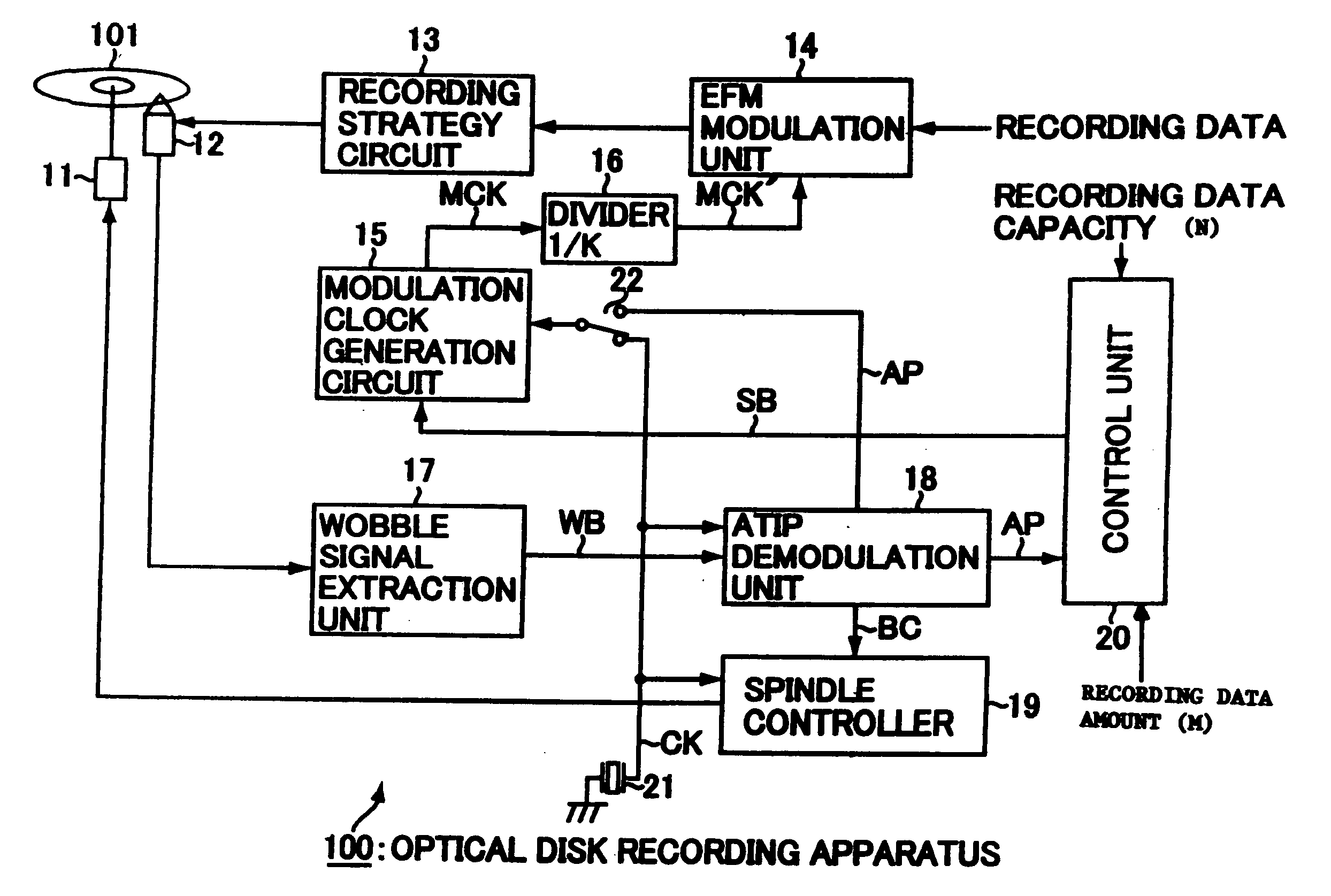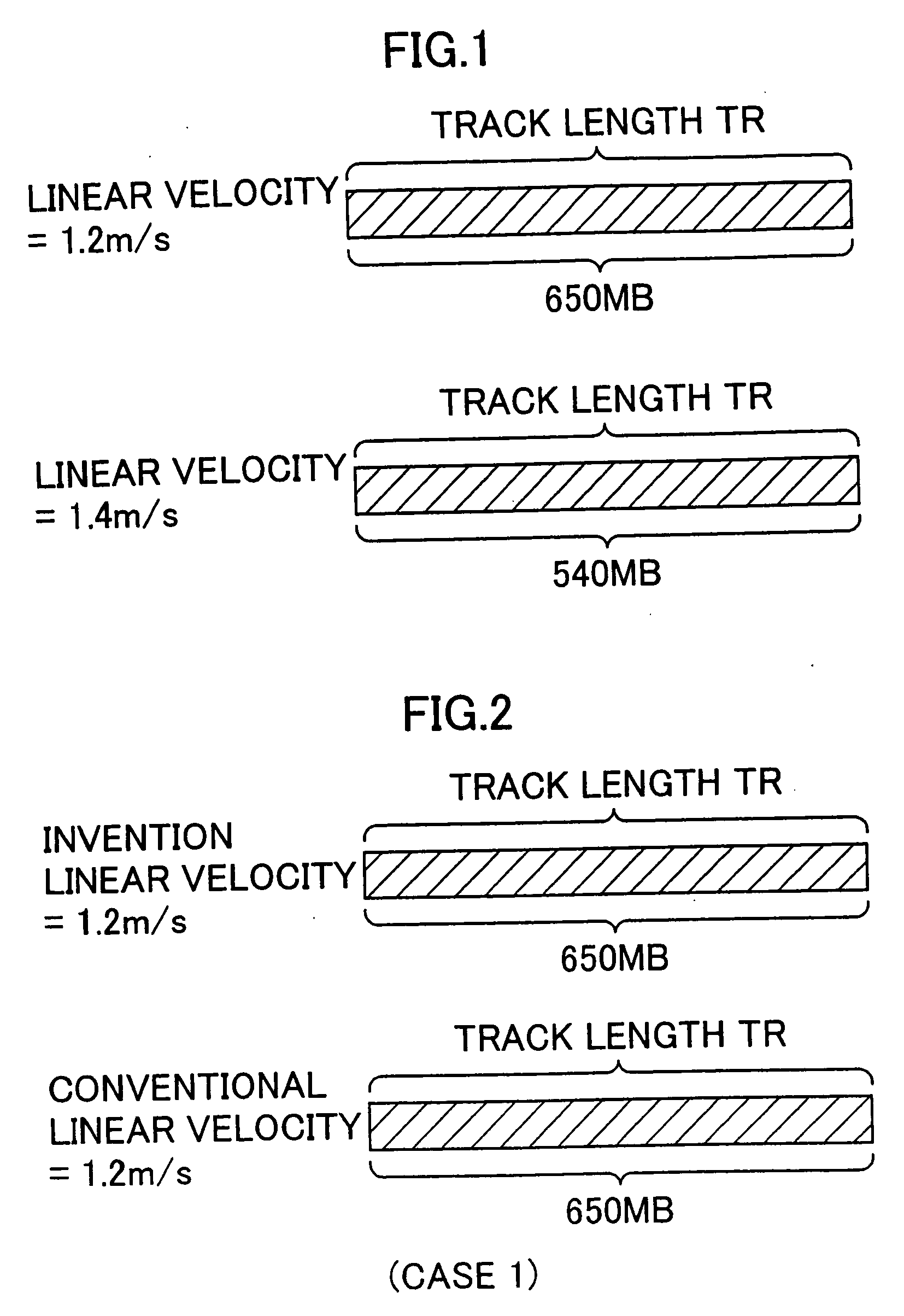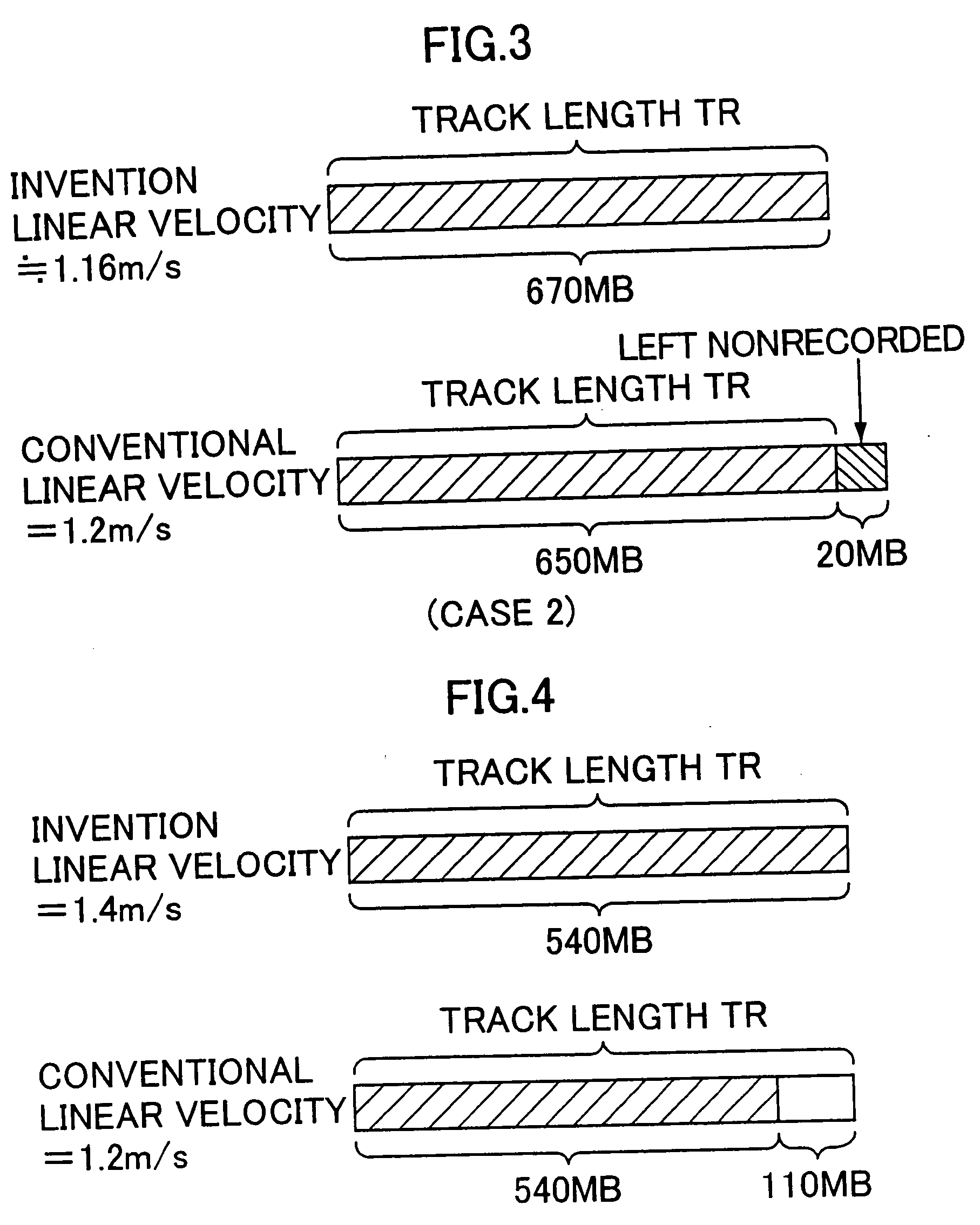Method of recording information on optical disks at recording density proportional to the actual information volume and disk nominal capacity
a technology of optical disks and recording methods, applied in the direction of recording signal processing, digital signal error detection/correction, instruments, etc., can solve the problems of troublesome disk selection process, insufficient recording area of 100 mb, time and effort spent in locating and purchasing, etc., to achieve increased quality, reduce recording density, and improve recording density
- Summary
- Abstract
- Description
- Claims
- Application Information
AI Technical Summary
Benefits of technology
Problems solved by technology
Method used
Image
Examples
case 1
(Case 1) Recording Data Amount M=650 MB
[0066] When the recording data amount M is 650 MB, that is, when the disk capacity N meets the recording data amount M, similar to a conventional optical disk recording apparatus, the recording is performed at the linear velocity identical to the rated linear velocity (1.2 m / s) of the CD-R as the recording object.
[0067] Here, the modulating clock signal MCK′ and the dividing ratio of the divider 152 will be described in a case where the recording is performed with respect to the CD-R 101 (disk capacity N=650 MB) having the rated linear velocity=1.2 m / s at the rated linear velocity of 1.2 m / s with reference to FIG. 9 and FIG. 8 described above. Additionally, in the following description, the numeric values for setting the frequency and dividing ratio will be described in the case where the recording speed is set to the standard operation speed (basic speed). When the recording is performed at the multiple speeds such as the double speed and fou...
case 2
(Case 2) Recording Data Amount M=670 MB
[0069] When the recording data amount M is 670 MB, the recording information is recorded at the effective linear velocity of about 1.16 m / s as described above, and therefore the modulating clock signal MCK′ supplied to the EFM modulation unit 14 has a frequency of 4.3218×670 / 650=4.4548 MHz. Therefore, the frequency of the modulating clock signal MCK oscillated from the voltage controlled oscillator 151 is 4.4548×64 (K)=285.1058 MHz. As a result, the value B for use in setting the dividing ratio of the divider 152 is 285.1058 MHz / 6.3 kHz=45255. Therefore, in Case 2, the control unit 20 outputs the control signal SB such that the dividing ratio of the divider 152 is set to 1 / 45255.
case 3
(Case 3) Recording Data Amount M=540 MB
[0070] When the recording data amount M is 540 MB, the recording is performed at the effective linear velocity of about 1.4 m / s as described above, and the modulating clock signal MCK′ supplied to the EFM modulation unit 14 has a frequency of 4.3218×1.2 / 1.4=3.7044 MHz. Therefore, the frequency of the modulating clock signal MCK oscillated from the voltage controlled oscillator 151 is 3.7044×64 (K)=237.0816 MHz. As a result, the value B for use in setting the dividing ratio of the divider 152 is 237.0816 MHz / 6.3 kHz=37632. Therefore, in Case 2, the control unit 20 outputs the control signal SB such that the dividing ratio of the divider 152 is set to 1 / 37632.
PUM
| Property | Measurement | Unit |
|---|---|---|
| linear velocities | aaaaa | aaaaa |
| linear velocities | aaaaa | aaaaa |
| linear velocity | aaaaa | aaaaa |
Abstract
Description
Claims
Application Information
 Login to View More
Login to View More - R&D
- Intellectual Property
- Life Sciences
- Materials
- Tech Scout
- Unparalleled Data Quality
- Higher Quality Content
- 60% Fewer Hallucinations
Browse by: Latest US Patents, China's latest patents, Technical Efficacy Thesaurus, Application Domain, Technology Topic, Popular Technical Reports.
© 2025 PatSnap. All rights reserved.Legal|Privacy policy|Modern Slavery Act Transparency Statement|Sitemap|About US| Contact US: help@patsnap.com



